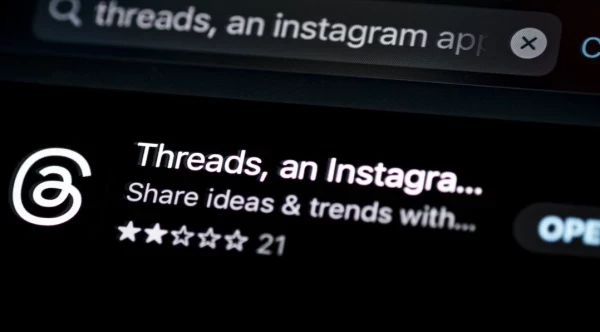Google Hijacked the Oscars: Seizing Cultural Zeitgeist to Engage the Customer
Bringing people together through what they have in common: movies
Add bookmark
As brands seek to insinuate themselves into the social rhetoric, pressure is mounting for companies to represent human faces rather than corporate monoliths.
It’s a tough ask for a brand; humans have opinions, quibbles, foibles and flaws – four things PR teams (and politicians) have historically taken great pains to hide. But customers won’t engage with a one-dimensional brand that shouts its product from the rooftops.
To stay relevant on social media, brands are experimenting with content that capitalizes on the cultural zeitgeist – the prevalent mood or set of beliefs that characterize a particular era.
If that doesn’t already sound maddeningly ethereal, it’s also extremely difficult to pinpoint what’s relevant to your target audience and how to participate without the appearance of an ulterior motive.
“We live in a pretty divided time and when we think about common passion points for our consumers...it’s hard to find [them],” Raashi Rosenberger, brand marketer for consumer apps at Google, said at Social Media Week New York last week.
That time Google hijacked the Oscars
A late entrant to the digital assistant market, the Google Assistant lags behind Amazon’s Alexa, which corners 61 percent of the market versus Google’s 24 percent.
To boost awareness of smart devices like Google Home, Nest and Pixel, the search engine giant got behind the 91st annual Oscars party in February.
Read more: Social Media Strategy for Customer Centricity - 4 Things We Learned at SMW 2019
“What we rallied around was this idea that despite people’s political differences and all these other elements of fragmentation around the culture, people still love movies…” said Rosenberger.
For the ‘#HeyGoogle, Let’s Go to the Movies’ campaign, the team edited scenes in classic movies like 2001: A Space Odyssey, Scream and Ladybird to show what would have happened if a Google Assistant had been present.
In Scream, for instance, Drew Barrymore’s character would have seen the masked killer at her front door on her Google Nest device and elected not to let him into the house, where he would eventually slaughter her with a hunting knife.
The 60-second TV ad aired on Oscars night during an anthemic spot, opening with Dave from 2001 asking the computer Hal to open the pod bay doors. When that doesn’t work, he asks Google to do it, and the assistant swiftly unlatches them.
Reaching customers across a range of online channels
Google wanted to leverage Oscars furor both before and after awards night, reaching dabblers and die-hard fans, cord-cutters and TV-watchers alike through a unified campaign. Equally important was giving creatives the opportunity to create their own memes and GIFs to take it from a passive campaign to a cultural moment.
When you need an Assistant, all you need to do is scream #HeyGoogle #Oscars pic.twitter.com/pvflsIKwX1
— Made by Google (@madebygoogle) February 25, 2019
“The idea at its core was let’s create a series of clips that will add playful levity throughout the Oscars broadcasts that focuses on the movies over the years,” said Rosenberger. “Those award-winning movies, those cultural, iconic movies – how they could have been fun and also different based on an integration with the Google Assistant.”
Those who didn’t watch the Oscars on Sunday night caught whiffs of the campaign from YouTube promotions, influencer tweets and organic Instagram posts featuring 15-second clips from individual movies.
#HeyGoogle, what would’ve happened if there was ride-sharing back in 2002? #Oscars pic.twitter.com/FisySpVfHl
— Google (@Google) February 24, 2019
“We created campaigns with GIPHY as well as TikTok to try and seed different types of conversations whether people wanted to create their own GIFs or memes or their own short-form TikTok video clips,” explained Rosenberger, a former creative strategy lead at Pinterest.
By working with influencers and dispersing the campaign across various channels, Google was able to reach new audiences. According to Rosenberger, 71.4 percent of social media mentions were by new users.
— Google (@Google) February 25, 2019
“For us this was really special because what we were able to do was crack into this whole other sphere of influencers who had audiences we weren’t necessarily talking to all the time.”
In addition to being widely lauded across Twitter, Facebook and Instagram for its entertainment value, the campaign boosted awareness of all three participating brands Google Home, Next and Pixel by 5-6 points respectively.
“This experience allowed us to really think about our consumers and the engagement model for our consumers,” said Rosenberger, “and how we can start to create emotional connections with everyday people...to allow people to feel like they’re connected to the technology.”
Taking the long view: short-term RoI versus long-term engagement
One of the biggest qualms marketers face is that social media engagement doesn’t always translate into conversions, and yet they’re required to meet certain KPIs for every campaign. Just because your brand happened to be in the right place at the right time during a viral cultural moment doesn’t mean customers will buy from you - especially given the saturation of brands posting paid and organic content on social media.
Read more: Brands as Storytellers - Analyzing the Content Strategy of Starbucks, WeWork and More
This begs a couple of questions: to what extent should you spend your limited marketing budget on content creation versus PPC, email marketing and other sales-focused content? What is the right balance? Furthermore, the metrics for a long-term, cultural zeitgeist-focused campaign should not be the same ones you use for your other social media promotions, because customer engagement is about the long haul.






















